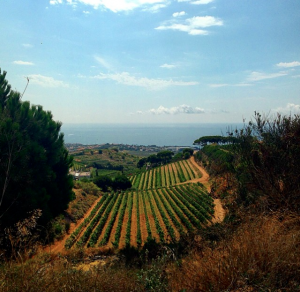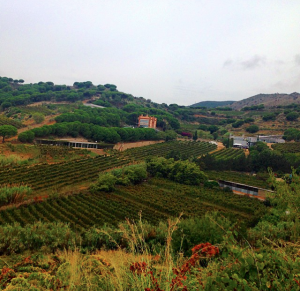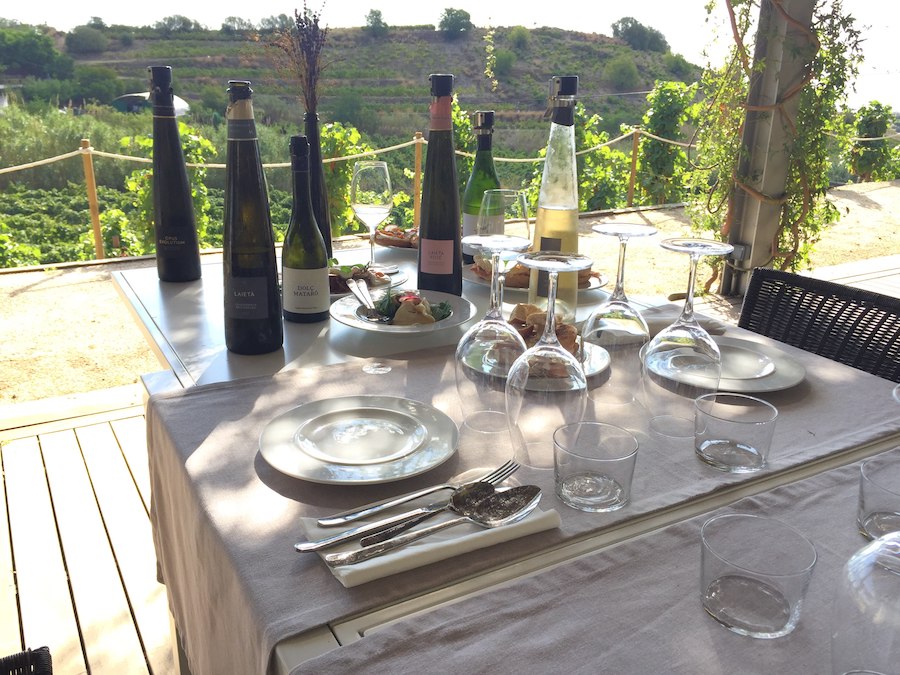I could begin this by being witty, saying something like “I wouldn’t be lying if I told you honestly I genuinely enjoyed visiting Alta Alella.” However, I will refrain… Oh, I guess it’s too late for this now. My sincere apologies. Allow me another attempt, please.

Visiting Alta Alella was an honestly wonderful time, or was it a wonderfully honest time? This is because the information and hospitality extended to us was done as concisely as it was warmly. Alta Alella representatives have the perfect balance between professionalism and pure desire to provide hospitality. So perfect, in fact, I believe I’m still spinning from the amount of information I received and wine I consumed.
In all truthfulness, what I do remember is being taken on more of a journey rather than guided tour. This is a journey stimulating the intellect as much as engaging and perhaps even numbing, my senses. Alta Alella is as much a story about philosophy and practice as it is about the finished products. By the way, they are all truly delicious.
Looking down from one of the highest points from within the vineyard — its best observation point — we learned from Giorgia (who runs the guided tours at Alta Alella) how an exceptionally sparkling wine maestro finally decided to literally and figuratively put down his own roots and make great wines for himself.
Framed by the Mediterranean Sea just two kilometres behind her to the east and the Barcelona skyline to the the south, Giorgia spoke with great affection for Josep Maria Pujol-Busquets, the fore-mentioned wine maestro, and how he set out 23 years ago to produce wines of purity and transparency using certified organic agricultural practices. Ten years after planting the first 6 hectares and the maestro’s sojourn to bring the Mataro grape back to the region, Alta Alella’s first wines came to fruition. The wine maestro performed a symphony with the beloved local Xarel.lo in those first crops.
Today, the vineyard now encompasses 50 hectares, but the practices steeped in ancestral tradition have remained the same. There are no herbicides and no pesticides, allowing only nature’s balance to shape the wines. The harvest itself is done naturally by hand over a two month period, allowing each grape of each plant to grow to its optimal ripeness in its own space and time.
Towards the end of our spell with Giorgia, she shared openly with us that 20 varietals are grown at Alta Alella, 17 of which are on the record. The other 3 varieties? Let’s just say that as an American I understand all too well transparency does not mean “without secrets.”
Upon descending from the mountain wiser — but not bearded — we were greeted by Valerie (who is in charge of enotourism and communications) and led temptingly to the Alta Alella Visitors Centre to experience the results of a core philosophy held tightly by daily practices and rituals. Valerie quickly lowered my guard, to open my mind, by handing me some Laieta Rose. As she expounded on Josep Maria being the first oenologist to bring back Mataro to Catalunya, I couldn’t help but think that if the pink cava dancing on my tongue was any indication, the variety is very happy to be back home.

To reinforce Alta Alella’s commitment to organic practices, Valerie handed me next a glass of Privat Bruel Brut to introduce us to the vineyard’s new sulphite-free natural series. With Don Ho playing in my head, as the tiny bubbles cascaded silkily down and around my tongue, she explained how an organic vineyard could somehow become even more organic. My mind wandered to thoughts of a famous guitar amplifier that went to “eleven.”
Other stops were made during the gustative and olfactory part of the journey, including the Orbus which made me sing “Que Syrah, Syrah” and the Dolc Mataro which had me convinced chocolate must come packaged with it. All along the way, Valerie explained how Alta Alella’s enotourism was an important part of the vineyard’s philosophy of transparency. Here it is not just about a leisure stroll and kicking back with an array of the offerings, (this happens anyway… call it collateral pleasure) it’s about understanding, really understanding how all the flavours, aromas and textures come to be.
At the end of our journey I felt like we really did understand this “how.” This “how” is simple. Tell the truth. How do you achieve this? Through transparency.
At Alta Alella this means from one vintage to the next the weather and climatic conditions are allowed to write the true story of the year, so the wine can tell it truthfully. All great stories find outlets and garner awards, so it should come as no surprise Alta Alella’s wines have been heavily decorated. Their varieties currently find audiences at some of the world’s best restaurants, including many Michelin starred ones. And you know what?
They truly deserve it.